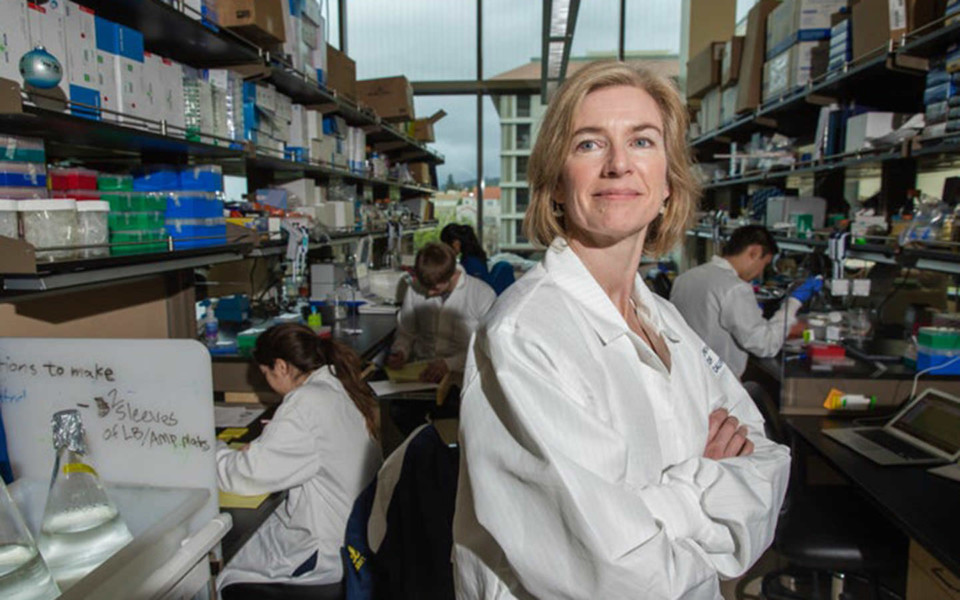The Long View On Gene Editing
It began as an effort to understand how microbes fight viral infections. Within their chromosomes bacteria store snippets of DNA taken from the viruses they encounter. These fragments, which are tagged by a set of DNA segments called CRISPRs (clustered regulatory interspaced short palindromic repeats), serve as a record of past infections, and allow bacteria to become immune to future infections.
For Jennifer Doudna, an HHMI investigator and professor of chemistry as well as biochemistry and molecular biology at the University of California, Berkeley, the big question was, how did the system work? The answer lay with an enzyme named Cas9. Doudna and her team found that when armed with an RNA copy of one of the viral mug shots, the Cas9 enzyme could recognize and disable viruses that carried a matching sequence.
Once she understood this system, Doudna set out to harness it. By feeding the Cas9 enzyme a guide RNA of her choosing, Doudna found that she could edit target DNA much more easily and accurately than with existing methods. A Cas9-directed incision could inactivate a target gene. It could also provide an insertion site for new DNA, such as an altered version of the target gene.
The description of this CRISPR- Cas9 system—published in Science in 2012—launched a revolution in biology and biotechnology. In just seven years, CRISPR has become an essential research tool and the inspiration for scores of new start-ups. The technology has the potential to transform basic science, improve agricultural crops and cure genetic diseases. At the same time, it raises ethical questions about how to handle a technology that has the power to alter human evolution.


